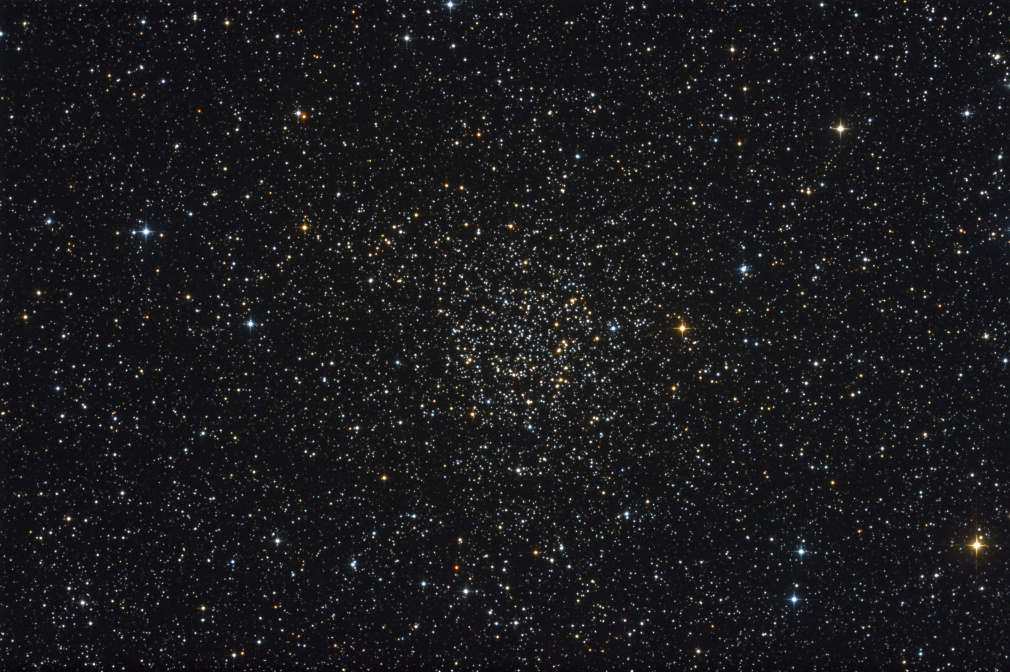The appearance of this open cluster is resembling a rose due to the arrangement of its stars, when observed with a telescope. The cluster is named after its discoverer, Caroline Herschel. In addition to its beauty, like all star clusters, Caroline's Rose helps astronomers to get better understanding of star formation and stellar evolution.
The cluster was discovered by William Herschel's sister Caroline Herschel, who also was an enthusiastic astronomical observer. In the 18th century comets were in the spotlight of astronomical interest. While searching for comets, astronomers accidentally discovered some comet-like (dim and diffuse looking) objects which were not moving relative to stars. The nature of this kind of objects was not known to scientists of that time, but because they made searching for real comets more difficult, astronomers started to catalogue them. Charles Messier and other astronomers including Caroline and William Herschel took leading role in this work. Caroline, before joining her brother's great deep-sky survey, was doing astronomical observations on her own. During this period she discovered 8 comets and several deep-sky objects, including the open cluster visible in the image above, which later was entered in the NGC catalogue as NGC 7789.
The cluster containing more than 1000 stars is about 7600 light-years away, its apparent size in the sky is about the size of the disc of full Moon, using these figures gives about 50 light-years as the real span of the cluster.
Open star clusters are young formations on the astronomical scale. Their stars were born approximately at the same time from the material of an interstellar gas cloud. The age of stars in NGC 7789 is estimated to be 1.6 billion years, which is slightly more then the third of the age of our Solar system. Because the age of the members of an open cluster is roughly the same, observing a cluster's stars of different evolutionary phase can give astronomers valuable information about the time needed for different phases of stellar evolution. Stars are not born all the same. One of their most important property is the initial mass, because it greatly determines the future of the star. Heavier stars consume their hydrogen more quickly, so they become red giants earlier. The yellow-orange-red coloured stars in the picture have already reached this phase.
